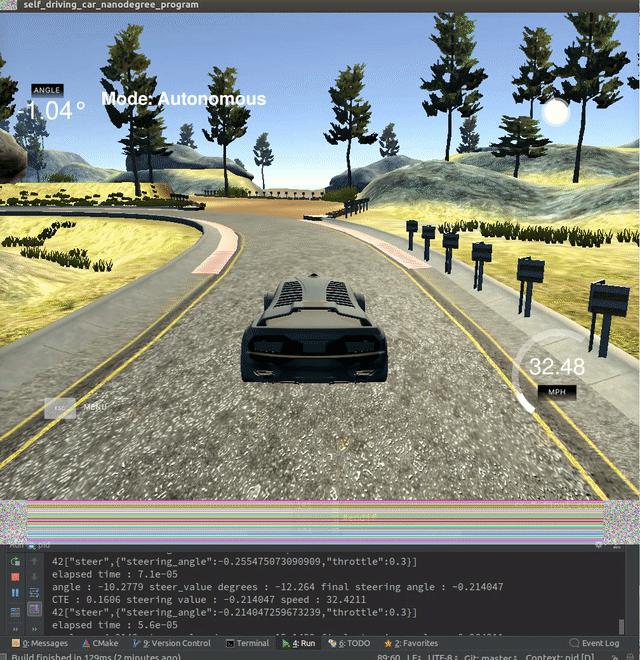tau-p (aka Kp in the code base) is the steering equations Proportional term which describes how hard you want to steer back to the centre of the road (x-axis).
tau-i (aka Ki in the code base) is the steering equations Integral term which describes how much the wheels are out of alignment.
tau-d (aka Kd in the code base) is the steering equations Derivative term which describes how much smoothing is to be applied to the steering turn-back correction in order to place the car in the centre of the road (x-axis).
d_error is the Differential error which stores how much this error changed since our last CTE recording.
p_error is the Proportional error which stores how far we are off the centre of the road, which is where we want to track to.
i_error is the Integral error which is the cumulative sum of all of our CTEs.
The steering value is calculated with this PID equation from Term2.Lesson16.Video11.
steer_value = (-pid.Kp * cte) - (pid.Kd * pid.d_error) - (pid.Ki * pid.i_error);
Through trial-and-error, I arrived at these values that successfully resulted in the car driving the simulated track.
double init_Kp = 0.3;
double init_Ki = 0.000228;
double init_Kd = 0.000255;
- Jerky steering but car remains on the track.
- Quick to implement.
- Computationally inexpensive.
Self-Driving Car Engineer Nanodegree Program
- cmake >= 3.5
- All OSes: click here for installation instructions
- make >= 4.1
- Linux: make is installed by default on most Linux distros
- Mac: install Xcode command line tools to get make
- Windows: Click here for installation instructions
- gcc/g++ >= 5.4
- Linux: gcc / g++ is installed by default on most Linux distros
- Mac: same deal as make - [install Xcode command line tools]((https://developer.apple.com/xcode/features/)
- Windows: recommend using MinGW
- uWebSockets
- Run either
./install-mac.shor./install-ubuntu.sh. - If you install from source, checkout to commit
e94b6e1, i.e.Some function signatures have changed in v0.14.x. See this PR for more details.git clone https://github.com/uWebSockets/uWebSockets cd uWebSockets git checkout e94b6e1
- Run either
- Simulator. You can download these from the project intro page in the classroom.
- Clone this repo.
- Make a build directory:
mkdir build && cd build - Compile:
cmake .. && make - Run it:
./pid.
We've purposefully kept editor configuration files out of this repo in order to keep it as simple and environment agnostic as possible. However, we recommend using the following settings:
- indent using spaces
- set tab width to 2 spaces (keeps the matrices in source code aligned)
Please (do your best to) stick to Google's C++ style guide.
Note: regardless of the changes you make, your project must be buildable using cmake and make!
More information is only accessible by people who are already enrolled in Term 2 of CarND. If you are enrolled, see the project page for instructions and the project rubric.
- You don't have to follow this directory structure, but if you do, your work will span all of the .cpp files here. Keep an eye out for TODOs.
Help your fellow students!
We decided to create Makefiles with cmake to keep this project as platform agnostic as possible. Similarly, we omitted IDE profiles in order to we ensure that students don't feel pressured to use one IDE or another.
However! I'd love to help people get up and running with their IDEs of choice. If you've created a profile for an IDE that you think other students would appreciate, we'd love to have you add the requisite profile files and instructions to ide_profiles/. For example if you wanted to add a VS Code profile, you'd add:
- /ide_profiles/vscode/.vscode
- /ide_profiles/vscode/README.md
The README should explain what the profile does, how to take advantage of it, and how to install it.
Frankly, I've never been involved in a project with multiple IDE profiles before. I believe the best way to handle this would be to keep them out of the repo root to avoid clutter. My expectation is that most profiles will include instructions to copy files to a new location to get picked up by the IDE, but that's just a guess.
One last note here: regardless of the IDE used, every submitted project must still be compilable with cmake and make./
